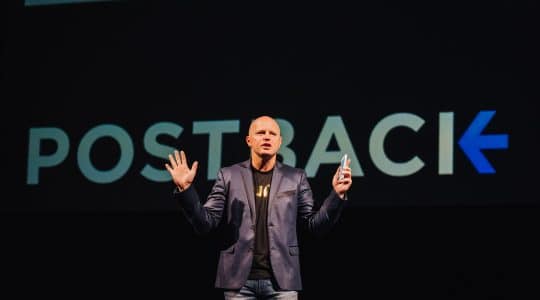
Ever wonder what it takes to manage a successful affiliate marketing program or execute a successful performance marketing campaign? I had a chance to talk with Sarah Bundy, an affiliate marketing manager and industry veteran to talk about performance marketing. Here are her thoughts on what publishers and brands should know, and her thoughts on the future of the affiliate marketing.
1. What should publishers know before joining an affiliate program?
There are five elements affiliates typically evaluate when deciding if an affiliate program is worth their time and investment. These are EPC, cookie days, commission rates, reversal rates and average order value. If the program has been around for a while and has a low to nonexistent EPC, chances are the program is either not converting, has inaccurate tracking, doesn’t have a dedicated affiliate manager to help or its products just don’t sell. Here are some guidelines I generally use to determine if a program is worth joining or not:
- EPC is higher than $5 and lower than $150 – Yes, I consider joining it.
- Commission Rate / AOV Combo – If the commission is 10% in two different programs and one program has an average order value of $150 and the other has a $50 AOV, I’d join the one with the higher average order value because it means I’m earning $15 off every sale versus $5 off every sale.
- Cookie Days – If two different programs have cookie days of 10 days versus 90 days, I will join the one with the longer cookie day option because it means I can earn commission for a longer period of time.
- Reversal rates – Sometimes an affiliate program can have a great EPC, great commission rate, high average order value and a good cookie window, but if they have a 30 day reversal rate above 50% I still won’t join it. A high reversal rate means something is either wrong with the products or the way the program is managed, and I will have 50-100% of my commissions reversed as well.
2. How can brands/networks set up their affiliates for success?
Offer affiliates the tools and information they need to succeed. Affiliates can promote a product 24 hours a day, seven days a week, but if they don’t have the right landing pages, tracking tools, consumer offers, high converting creative, or analytics to secure the sale, they won’t be successful. Your affiliate channel will do significantly better if you provide the right marketing tools. Remember, every affiliate is different, both in how they market and who they market to, so you have to consider the needs of different affiliate types and their skill levels so you can address each of their needs accordingly.
3. What are the best ways that a brand/network can measure an affiliate’s success?
I believe affiliates should be compared to themselves or to similar types of affiliates, rather than all affiliates within a program. In terms of performance you can’t compare a new mom blogger who is building her audience to an established monster coupon site like RetailMeNot or a PPC affiliate who has $50,000 in ad budget. This is just not a reasonable comparison.
Instead, group affiliates into different types, such as “blogger”, “ppc” ,”social”, and so on; then look at all the overall click through rates, conversion rates, number of clicks, impressions, and sales growth rates for each group. Next compare the individual affiliate performance numbers for the week, month, quarter and year prior to the overall group numbers and to other affiliates in the same group. By being diligent in your affiliate groupings and watching individual affiliate stats, you will see your program grow more successfully over time because you will be able to address and understand each segment more clearly.
4. What do you think is the future of mobile in the performance marketing industry?
I think mobile is an incredible opportunity for the performance marketing industry. There are six main ways to drive sales and leads through mobile: display, video, search, text, phone calls and apps. Considering the growth rate of mobile, combined with the different tracking options and creativity of affiliates, mobile will become one of the largest drivers of sales and leads in the next few years in the affiliate marketing space.
5. What are your thoughts about the potential for success in performance marketing with other emerging mainstream platforms, such as video and social networks like Pinterest and Vine?
These are also incredible opportunities for substantial growth in the next few years. I think a lot of networks and merchants forget affiliates can use exclusive coupon codes, URLs, toll free numbers and smart tracking links to credit sales back to them, so even offline becomes an option under the affiliate marketing model. TV, radio, newspapers, social platforms, online video, dynamic display, and mobile are all feasible options (amongst others) that should not be overlooked.
6. How can brands/advertisers determine the true ROI of their affiliate program?
That’s a great question and one that has a very complex answer. I believe it starts first with determining the purpose and goals of having an affiliate marketing program in the first place. Is the goal to drive additional brand exposure, more consumer and third party interactions, or to increase incremental sales? Or is the purpose to just support all sales efforts regardless of them being incremental for customer retention and/or the extension of the customer’s lifetime value? Each merchant will have to determine the purpose of their program first before they can determine true ROI. Once they have this purpose defined, they can use tracking platforms, tools and deeper analytics to better understand attribution and cost per acquisition per channel. This will help them determine what their affiliate program contributes to the return on investment of their overall marketing mix.
7. What was your first performance marketing success?
I started in the industry back in 2004 with a company called CoastalContacts. It has now become the world’s largest online retailer of optical products and is on the Internet Retailer’s Top 500 list. When I took over as affiliate manager, the program was driving minimal monthly sales through the affiliate marketing channel. Within three years affiliate marketing generated several million dollars in annual revenue for the company. I carefully grew the program from a few dozen affiliates to nearly 1000, many of which I worked with personally to help them drive higher sales for both themselves and the company. All in all we saw a 1500% lift in sales because of my efforts and focus in the industry.
My second greatest achievement in this industry has been building a full service performance marketing agency from scratch – All Inclusive Marketing. One that attracts award winning experts to be part of our team, offers tools and services that are not found anywhere else in this industry, has high profile clients who lean on us for multiple expert services, and has provided our clients with a 1100% growth rate. As a company we continue to give back to our community through education, innovation, genuine care of the people in it and ethical business practices that produce solid results.
8. How do you recruit quality affiliates for your clients?
There are a great many ways to do this. Social platforms like LinkedIn, Facebook, and Twitter, manual searches, our own proprietary tools, conference attendance, and referrals by other high performing affiliates are just a few of the ways we recruit quality affiliates. There are 18 practices we put into place for effective affiliate recruitment that enable us to focus on high value affiliates and customer acquisition for our clients. This is an entire area of focus in both our training and coaching services as well as our a-la-carte services that clients come to us for help with.
9. Any other thoughts you have about the future of the performance marketing industry?
I believe the industry has its challenges yet has an incredibly bright future which I’m extremely excited about. I believe as long as there are consumers to buy products and services, there will be an industry for us. It will never die. It will simply continue to evolve as technologies, products and buying behaviours change. Affiliate marketers are like chameleons. Give us a day to explore something new and we will eat, sleep and breathe it, adapt to it and quickly become stronger because of it. Because of the resilience, determination, adaptability, and smarts of affiliates, advertisers will continue to lean on their efforts and expertise to grow their businesses globally.
Like this article? Sign up for our blog digest emails.
Author
Becky is the Senior Content Marketing Manager at TUNE. Before TUNE, she handled content strategy and marketing communications at several tech startups in the Bay Area. Becky received her bachelor's degree in English from Wake Forest University. After a decade in San Francisco and Seattle, she has returned home to Charleston, SC, where you can find her strolling through Hampton Park with her pup and enjoying the simple things between adventures with friends and family.




This is very helpful! I’m new to this industry and found your article insightful.
I know this is an old thread, however I am interested to ask – If there is a high EPC of say $200 and an average commission of $15, how can I forecast my earnings from this? (also average sales is $98)
Thank you for this blog. We have recently started researching reversal rates and have realized we have a program that has been editing out or reversing 40-75% of our referrals for the past year and a half. We were completely unaware of the partial reduction edits taking place in the background until the full blown reversals started becoming significantly frequent. We’ve communicated with the program and they have claimed that there is nothing suspect taking in place in the program, yet we haven’t been able to find a way to rationalize the outrageous reversal/return rates. We work with a large amount of merchants, and most have reversal rates in the 0%-5% range. Our instinct has been telling us that the program with the large reversal rates clearly has something taking place that isn’t right, and to run fast, but we’ve had the program trying to make us feel like we had no grounds for concern. They have a large list of “valid” reasons that they reduce commissions for on clean legitimate sales, and it became rare to have a referral to them that wasn’t reduced by more than half, or reversed completely.
It makes us feel better to hear your take on high reversal rates. We agree. Something is not right when over half the sales or voided, no matter the reason they give. We’ve finally decided it’s a waste of energy to promote programs with any kind of high reversal rates no matter what they claim is the reasoning. We’ve spent months looking into the reversal rate issue, and and there really shouldn’t ever be those kinds of percentages. We understand that there are legitimate reasons for reversals such as affiliate fraud they may experience, but we’ve begun to feel that if it’s more than 15%, they merchant is likely doing something suspect, or they are nickel and dime-ing affiliates any which way they can find to reduce commissions. Even if the reasons may fall within the reasons they are allowed to reverse commissions, that’s just not the kind of merchant who values their affiliates.
Thank you for this information though. We’ve learned the hard way that affiliate need to educate themselves or it’s easy to end up investing a lot of time into programs that don’t value you or benefit you. These kinds of articles are appreciated.